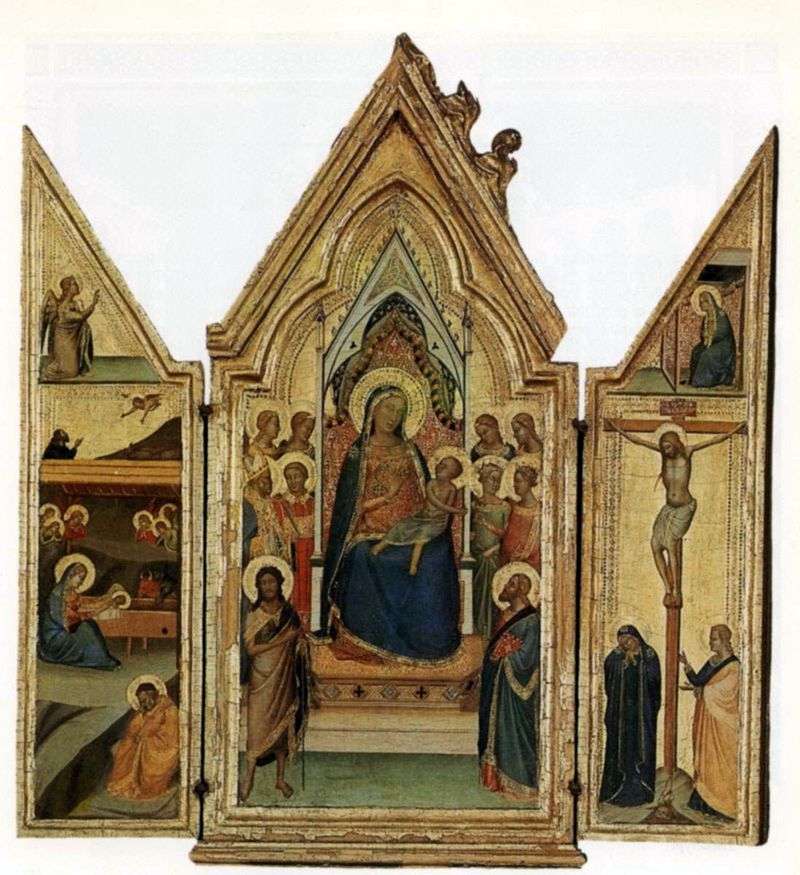
In the religious life of the XIV century. A larger than before, the role was played by small altars, which served for domestic prayers. Their iconographic program succinctly included the Christian teaching. On the central board of the triptych is the Virgin Mary in glory, surrounded by angels and saints.
The baby sitting on her lap is happily stretching for the red cross and flower that the martyr-maidens are holding out to him. The bird in his left hand is a symbol of suffering. The left wing of the altar depicts the birth of Jesus, and on the right – the death of Christ. Above these scenes, on the two extreme pediment paintings, the Annunciation scene is depicted. “Franciscan reflections on the life of Jesus, popular in the fourteenth century, began from this scene to awaken awe in people, similar to the one that was engulfed by Mary.
It was believed that after the joys and sorrows of earthly life, represented by the birth and death of Christ, a man will enjoy the blessedness of eternal life. This idea was reflected in the central picture of the triptych, where the saints are depicted in the company of the Madonna and the Child and the angels: on the left – the holy bishop, presumably Saint. Nicholas, next to him a deacon in red clothes – probably St. .. Stefan, the first Christian martyr; on the right – two holy princesses representing the martyr, one of them, in a red dress and with a book in her hand, – St. Catherine of Alexandria. The green strip before the throne of the Madonna signifies the earth’s zone, where St. John the Baptist and apostle of St. Jacob. Bernardo Duddy was a student of Giotto. This is most often indicated by the heavy massive forms of the Nativity scene.
An important role here is played by the desire to convey the depth of space with the help of dark and light color spots. This picture is characterized by a monumental, fresco image. In contrast, the living dynamism of the central painting, the richness of its decorative forms and the remarkable palette show the influence of the modern artist of Siena painting.
The iconographic program of this small house altar and the artistic manner of performance repeat the triptych of Bernardo Daddy of 1333, kept in the Florentine Museum of Bigallo. This work is the pearl of the collection of the famous Altenburg Museum of Bernard August von Lindenau. This prominent scientist, an outstanding statesman of the Saxon principality, bought it, probably in Italy in 1843-1844.
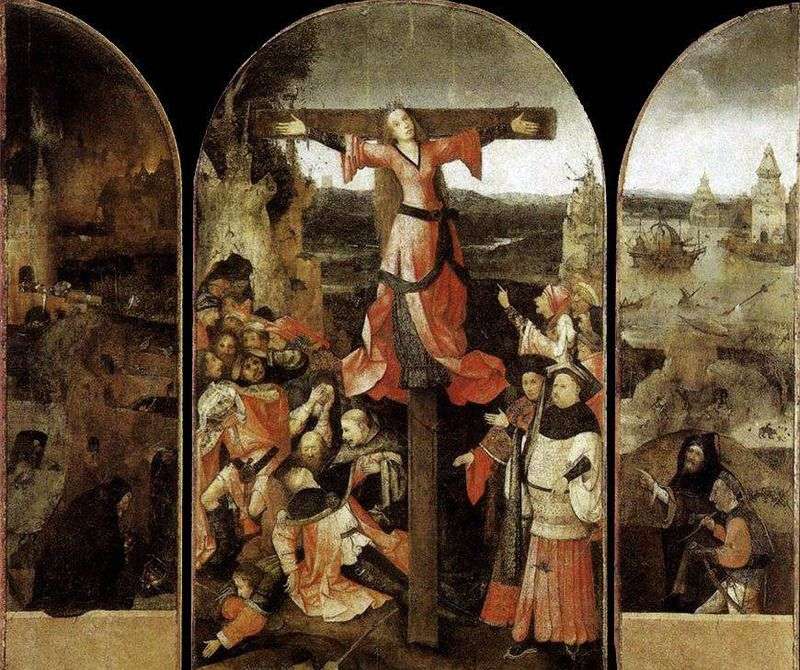 Martyrdom of the Holy Liberty. Triptych by Hieronymus Bosch
Martyrdom of the Holy Liberty. Triptych by Hieronymus Bosch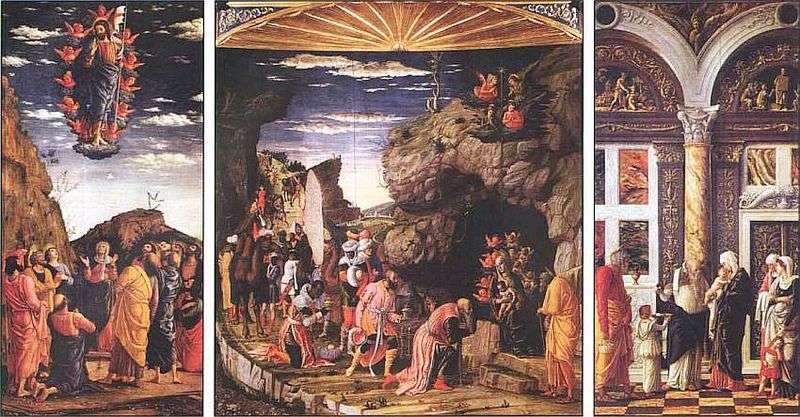 Triptych with the Adoration of the Magi by Andrea Mantegna
Triptych with the Adoration of the Magi by Andrea Mantegna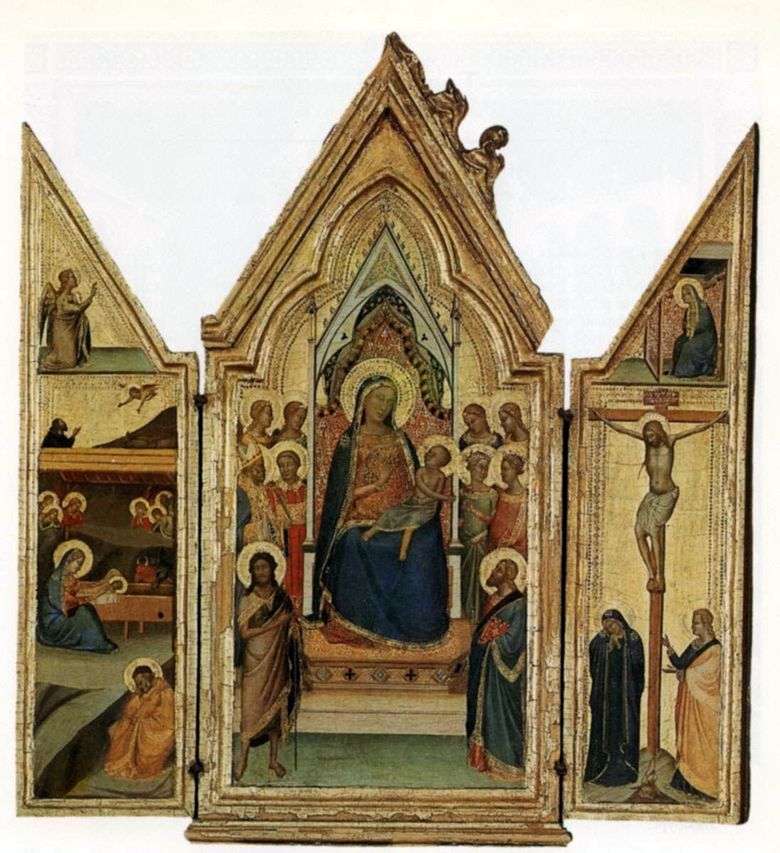 Tríptico – Bernardo Daddy
Tríptico – Bernardo Daddy Modena Triptych by El Greco
Modena Triptych by El Greco Healing of Jericho Blindness (Triptych Side Sash) by Lucas-van Leiden
Healing of Jericho Blindness (Triptych Side Sash) by Lucas-van Leiden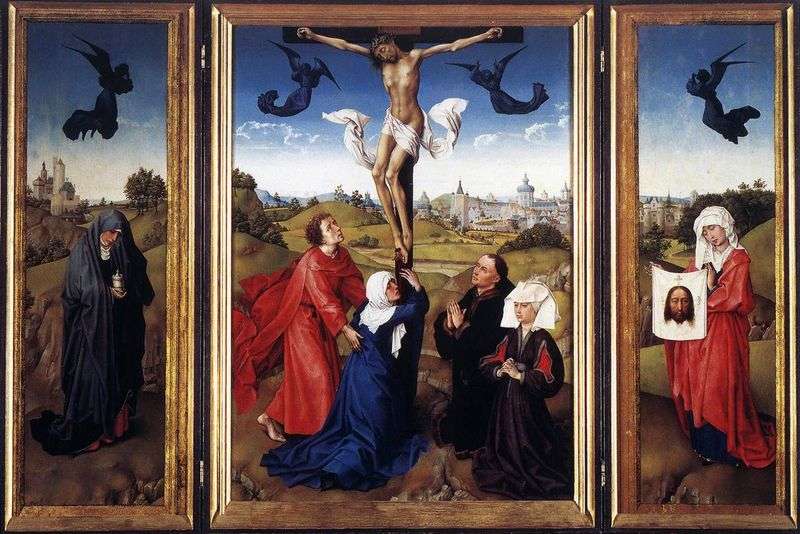 Triptych “Crucifixion” by Rogier van der Weyden
Triptych “Crucifixion” by Rogier van der Weyden Our Lady Before Christmas and Merry Christmas Virgo, with saints in the fields
Our Lady Before Christmas and Merry Christmas Virgo, with saints in the fields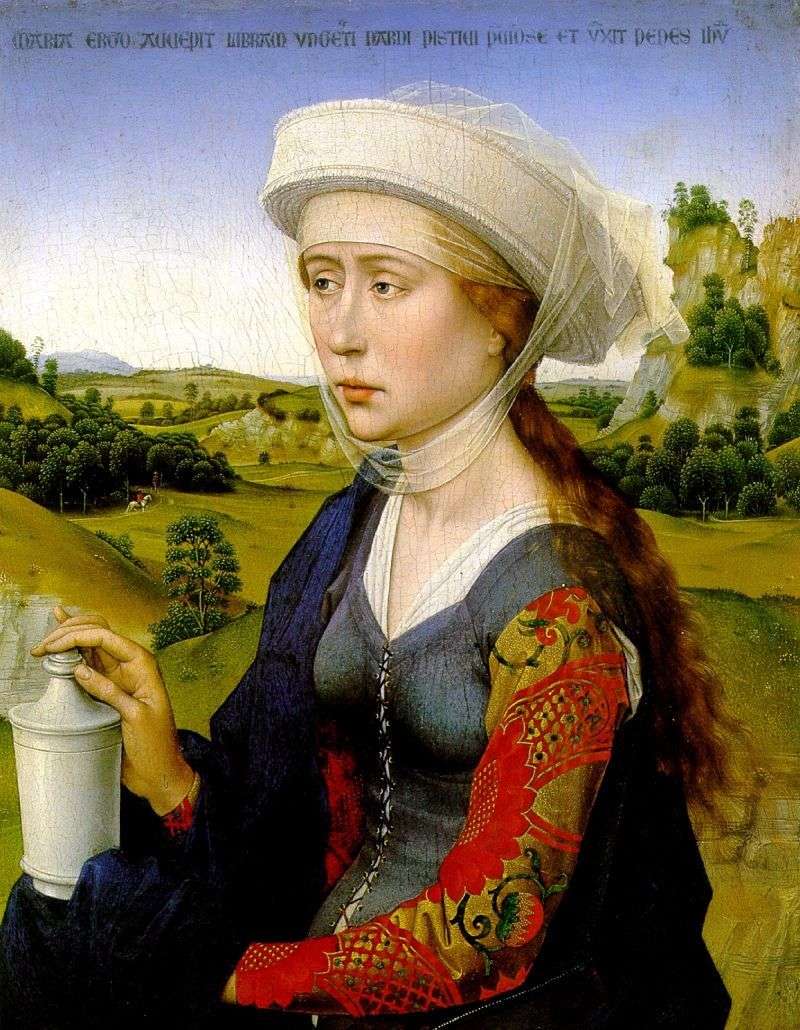 The right wing is Mary Magdalene. Triptych of the Marriage Family by Rogier van der Weyden
The right wing is Mary Magdalene. Triptych of the Marriage Family by Rogier van der Weyden